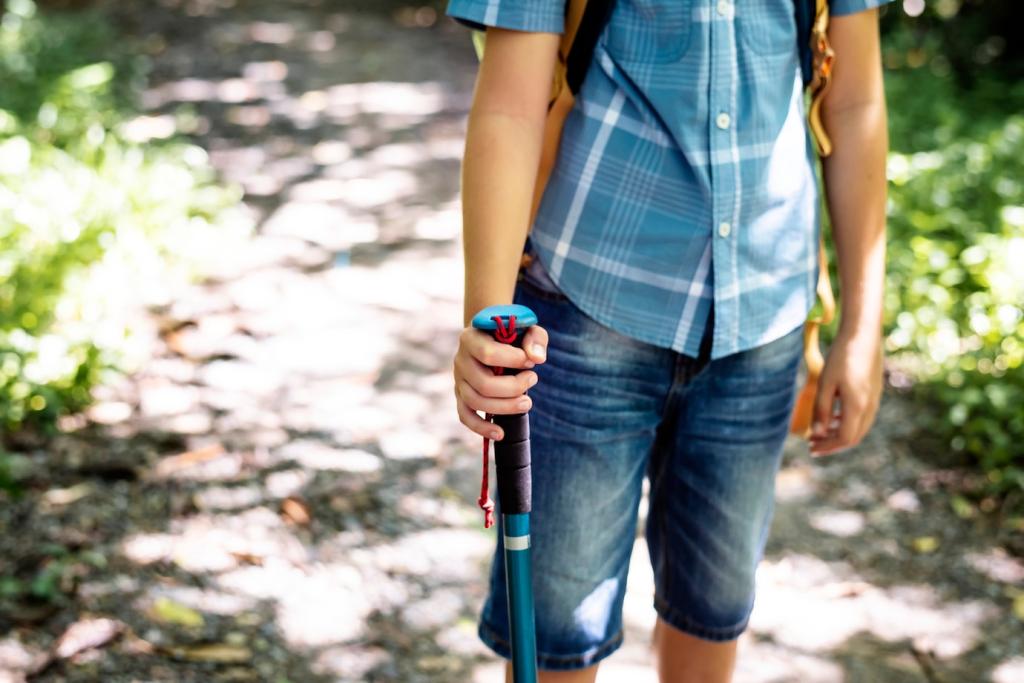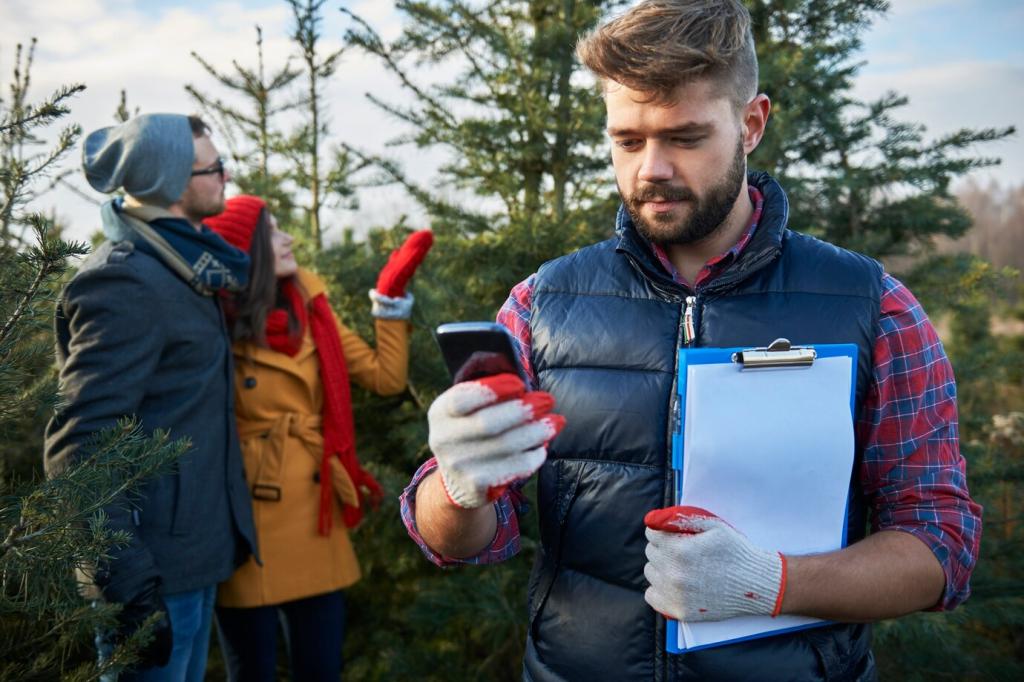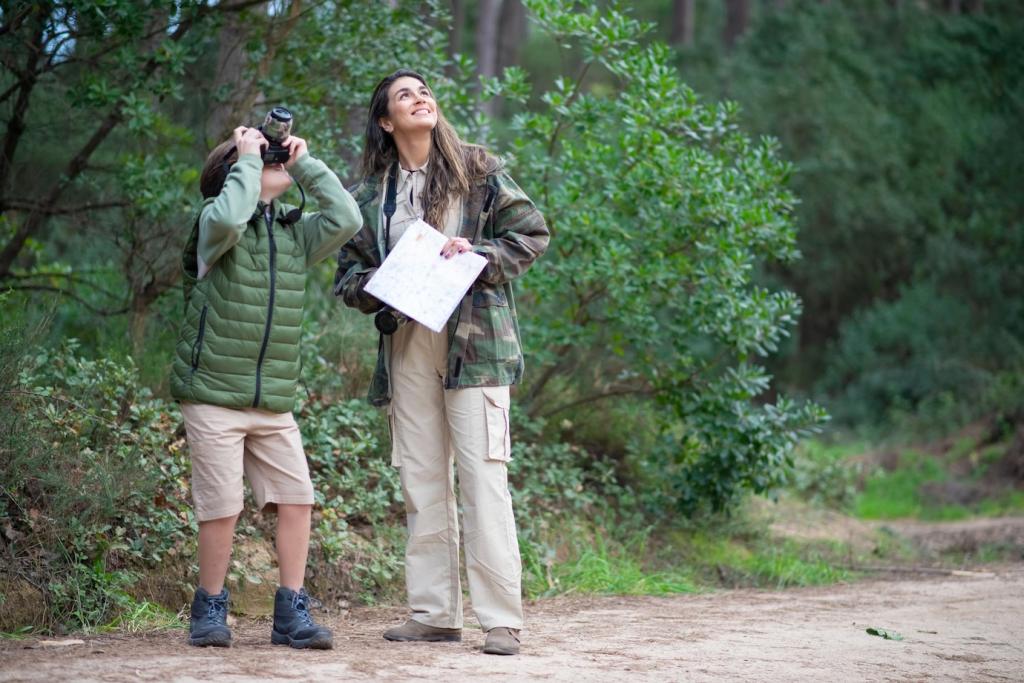
Trail Markings 101: A Friendly Guide for First-Time National Park Hikers
Selected theme: Understanding Trail Markings in National Parks for Beginners. Step onto the path with confidence as we decode blazes, cairns, signs, and symbols that quietly guide every safe adventure. If this guide helps, subscribe and share your own trail-marking discoveries with our community.
A single blaze tells you that you are on the right trail, like a gentle nod of reassurance. A double blaze usually signals a change ahead, such as a turn, junction, or caution. When the upper blaze is offset, it often indicates the direction of the upcoming turn.
Colors, Shapes, and the Language of the Blaze
Blue might mark side trails near the Appalachian Trail, while green or yellow may signal difficulty or specific routes in certain parks. Always confirm the legend at the trailhead kiosk, on official maps, or by asking a ranger before you start your hike.
Colors, Shapes, and the Language of the Blaze


Cairns, Posts, and Snow Poles: Wayfinding When Trees Disappear
Cairns are intentional navigation aids built by authorized crews, not souvenirs for a photo. Extra cairns can mislead hikers into fragile areas and cause rescue delays. Leave No Trace means admire, do not build. If a cairn seems off-route, stop and verify with your map.
Cairns, Posts, and Snow Poles: Wayfinding When Trees Disappear
In deep snow, trails and blazes vanish, so parks rely on tall poles or flagged wands. They may be widely spaced, requiring steady attention and a good sense of direction. Carry a map, compass, and offline GPS because whiteouts can erase the world in minutes.
Junction Signs, Pictograms, and Arrows You’ll Actually See
01
Start by matching your planned destination and trail name to the sign, then verify distance or time if listed. Compare abbreviations against your map, especially when routes share segments. Before moving, locate the first blaze or marker in the direction you intend to walk.
02
Expect hiker icons for walking routes, bikes for shared-use trails, or horse symbols for equestrian sections. Prohibition circles indicate restrictions like no pets or no fires. Arrows may be color-coded to match blazes, reinforcing the route when the forest throws confusing choices.
03
Some trailheads offer QR codes linking to current maps and closures. Download files for offline use before service disappears. Treat apps as complements, not replacements; the best setup is redundancy: paper map, compass skills, and a charged, offline-capable phone as backup.
Safety and Emergency Markers You Should Recognize
Locator numbers, mileposts, and how to report location
Many parks place numbered posts or labeled junction signs that correspond to map references. If you need assistance, report the exact marker ID, trail name, and direction of travel. Practice noticing these IDs so your call for help is calm, precise, and effective.
Warnings, closures, and seasonal advisories
Hazard markers may warn of high water, unstable cliffs, or avalanche terrain. Respect closure tape, barricades, and posted detours—they exist for your safety and habitat protection. If a sign looks recent or storm-blown, confirm details on official channels before continuing.
Reflective markers for dusk, fog, and nightfall
Some routes use reflective blazes or cat-eye tacks that glow in a headlamp beam. They are a last resort, not an invitation to hike late. Plan to finish early, but if conditions darken, move deliberately from one confirmed reflection to the next without skipping unknown gaps.


Respect the System: Leave No Trace Meets Trail Markings
Pulling flagging, painting your own blazes, or stacking rocks for fun can confuse others and damage fragile habitats. If you want to help, join a volunteer day. There, you will learn official standards, durable methods, and when to remove misleading, unauthorized markers.
Respect the System: Leave No Trace Meets Trail Markings
If a blaze is fading or a sign is down, note the exact location, snap a photo, and share details with the park office or trail association. Specifics matter: coordinates, nearby landmarks, and the direction you were traveling accelerate safe, professional fixes.
Trailhead drill: predict the next blaze
Start at the first visible blaze and predict where the next will appear based on turns and terrain. Walk to confirm. Repeat a dozen times. This playful habit tunes your awareness and makes surprise junctions far less intimidating, even on unfamiliar trails.
Family game: marker scavenger hunt
Create a list: one double blaze, one cairn, one junction sign, one distance plaque, and one reflective marker. Assign points and celebrate small wins. Kids and beginners quickly learn to spot subtle clues, building safety through curiosity and teamwork without pressure.
Join the conversation and keep learning
Share your first blaze story in the comments, ask questions about symbols you have seen, and subscribe for future deep dives on seasonal markings. Your experiences help others learn faster, and your questions shape the next guides we create together.
